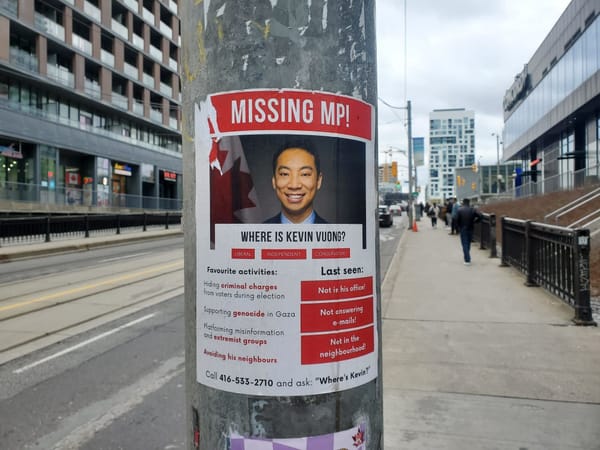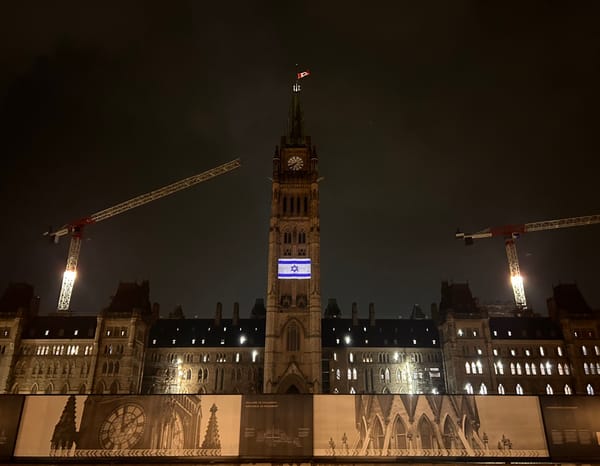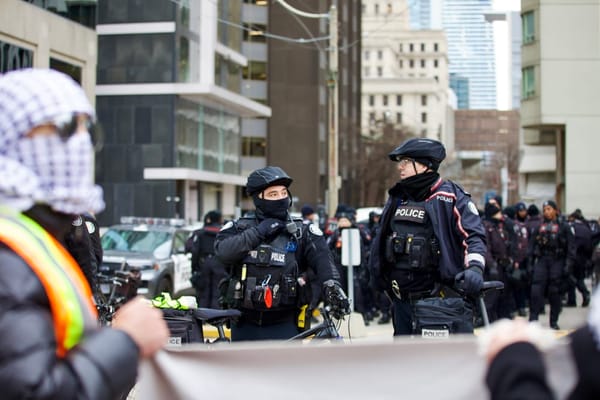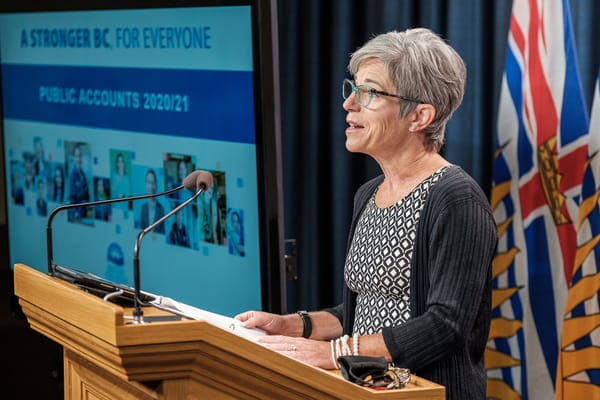Just last year, many Canadian lefties were openly mocking the Green Party, whether for that anemic and bumbling “Not Left. Not Right. Forward Together” election slogan, or hiring Warren Kinsella to “protect” leader Elizabeth May from cyberbullying. The Green Party’s ongoing leadership race, however, is causing parts of the left to see them in a new light.
The Greens lack much of a public identity beyond former leader Elizabeth May, with whom the party has been closely associated for the past 15 years. As such, a race to replace her was always going to double as a soul-searching mission. This has given the progressive wing of the party a chance to move it left, where May wouldn’t allow it to go. With a wide-open field, due to the party’s lack of any real ideological strictures, and no clear narrative guiding the race, victory is there for the left’s taking.
As such, it’s no surprise the race has attracted candidates advancing platforms further to the left than practically anything else proposed by a Canadian party with parliamentary presence for the past 15 years, at least. This includes eco-socialist candidates Dimitri Lascaris and Meryam Haddad, and the progressive but hard to categorize Amita Kuttner. They’re all running on platforms stuffed with ideas generally regarded by the political class as too radical for most voters: a $20 minimum wage; police abolition; guaranteed minimum income; a robot tax.
The party now seems uniquely relevant to the left’s ambitions, which is a remarkable statement on its own. What might’ve been an uninspiring coronation six months ago has become something else: an insurgent push to see a socialist take charge and hopefully turn the Greens into a new standard bearer party for progressives fed up with the NDP.
A loose “collective” under the name Justice Greens has taken the most active role in this push. Most members had no existing ties to the Green Party, nor even much interest in it, ahead of this leadership race. But the Justice Greens see this race as an opportunity to take over a party with an existing brand and infrastructure.
They’ve issued a strategic ranked ballot endorsement for Lascaris, Haddad and Kuttner. This endorsement, and others, has helped Lascaris build fundraising momentum that in recent weeks rivals centre-left candidate Annamie Paul, widely seen as one of the May-approved frontrunners.
But it’s not enough for Justice Greens to simply point voters towards an alternative that might be broadly palatable: They want to change the political game, and send a message that they’re fed up with the NDP, its reticence to denounce Israel and its weak messaging on pipelines. In the Green Party, they see a once-in-a-decade chance to shuffle the political equation by pushing it so far to the left that it’s unrecognizable. They want to see a socialist party where none existed. They want the Green Party, for once, to matter.
What the Justice Greens and many progressives view as the process of democratic renewal, however, May and her inner circle have viewed as anti-democratic. “Trying to ‘game’ the ballot. And wrongfully using a logo that makes them look legit. Who are you??” May wrote, in a now-deleted tweet describing the Justice Greens. She’d tipped her hand; how could a leader who ostensibly worked to improve the party’s numbers possibly complain when it starts happening, with membership in the party doubling over the course of the campaign?
This appeared to confirm what progressives on the campaigns already knew: Whether by selectively offering her services as Fundraiser in Chief, or allegedly trying to ratfuck Lascaris out of the race completely, May has treated the race’s progressive turn with a skepticism verging into scorn. It has lent the race a familiar dimension for those participating: the status quo and the revolution; Boomer v Zoomer; Hillary v Bernie — over and over again, an old guard clinging to power against an insurgent new one. The characters change, but the political power dynamics often don’t.
The strands of Canadian left politics have been pointing to a potential realignment like this for a long time. Many of the left’s key political fixations — pipelines, Indigenous land rights, energy policy — intersect under the umbrella of green politics, something both the Green Party and to some extent the NDP, have been reticent to try to tap into. Neither party has ever been able to call itself the natural home for the leftist, climate-minded voter.
Leftists assuming leadership in the Green Party, and building electoral support, would offer a clear statement that the left’s response to the climate crisis is environmental and anti-capitalist in equal measure, that anything less is mere green-washed bullshit, that it’s no longer good enough to back a party whose name is attached to projects such as Coastal GasLink and Trans Mountain, that the magic of 2011 might’ve died with Jack and isn’t coming back.
There are, to a degree, questions yet to be answered. What does this do for the left’s electoral math? What will this mean when another election is called and the Greens and NDP are squaring off? What good does a constant state of battle and renewal do for anyone when things seem worse than they ever have?
This process, foreboding as it is, may force a timely reckoning for the Canadian left over what a progressive movement should look like in Parliament. That’s what makes the Green Party race something worth thinking about, even if you haven’t joined it: In real time, the left is witnessing the creation of options for itself.
Ask yourself: When was the last time the working class had a budding alternative, socialist candidates or even a reason just to sit up and take notice?







Member discussion